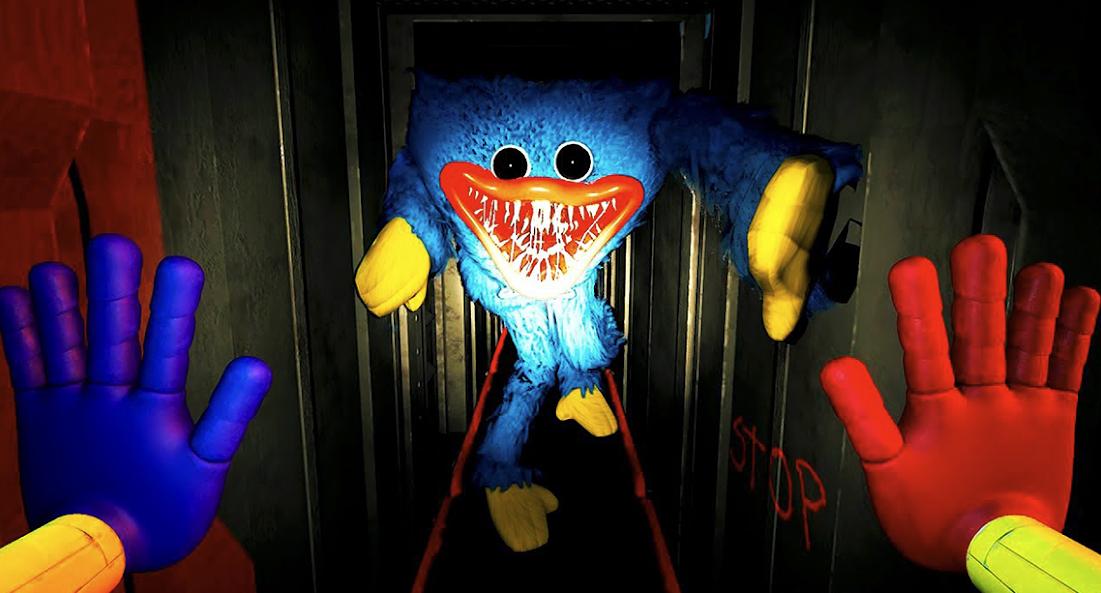Positive Reinforcement Examples—and How to Use Them to Create a Happier Home

There are many challenges when it comes to parenting, and figuring out how to encourage good behavior is one of the big ones. If a positive parenting style is important to you, we’ve got some helpful positive reinforcement examples that could help. We’re also going to take a look at positive punishment strategies and consider whether these are effective in discouraging children from repeating unwanted behavior. Ready to get started? Let’s dive in.
Contents:
- What Is Positive Reinforcement and How Does It Work?
- How to Use Positive Reinforcement Correctly
- Examples of Positive Reinforcement
- Reinforcement Schedule: What is It?
- About Rewards and Behavior
- On the Other Side: Negative Reinforcement
- FAQs
What Is Positive Reinforcement and How Does It Work?

fizkes/Shutterstock.com
A positive reinforcement strategy refers to when an individual experiences a favorable outcome—like a reward—as a consequence of displaying a certain behavior. It’s termed “positive” rather than “negative” as it involves something being added, rather than taken away. Many parents use this approach as part of a wider discipline strategy.
Four Types of Positive Reinforcement
There are four main types of positive reinforcement. These are likely to have different outcomes depending on your child’s unique personality and the behavior that’s occurring. Natural types of reinforcement are when the consequence naturally follows from the action. For example, a student works hard on their reading at home and is given an award in recognition of this at school.
The second example of positive reinforcement is social reinforcement, where children experience approval following a certain behavior. This could be something like a parent simply saying “well done,” or a teacher giving praise for putting in a great effort.
Tangible reinforcement involves giving actual rewards when the desired behavior is displayed. This could be in the form of toys, money, or candy, for example, and may be an extremely motivating factor for most kids. However, it’s wise to use this strategy sparingly.
Finally, you could deploy token reinforcement in order to encourage good behavior. With this method, a child is given a token (or point) when certain actions are performed. Once a certain amount of tokens are collected they can be exchanged for a reward or an item of value.
Pros and Cons of Positive Reinforcement

GaudiLab/Shutterstock.com
As with everything, there are pros and cons to deploying a strategy of positive reinforcement and understanding these will help you figure out whether it’s the right approach for your child.
Pros of Positive Reinforcement
- Encourages desired behaviors and actions in a way that doesn’t involve traditional “punishment.”
- Ultimately helps children make better decisions on their own, great for now and the future.
- Supports good behavior and the taking of responsibility.
- Can improve a child’s self-confidence. Whereas punishment may have a detrimental effect on kids’ self-esteem, positive reinforcement can increase their sense of self-worth.
Cons of Positive Reinforcement
- There’s the danger that kids will expect a reward after each “good” act.
- The reinforcement needs to be executed fairly quickly.
- May result in an attitude of entitlement if the strategy isn’t properly managed.
Positive Reinforcement vs. Positive Punishment

fizkes/Shutterstock.com
They sound familiar, but positive reinforcement and positive punishment are very different strategies. Positive reinforcement is all about encouraging good behavior, while positive punishment is about discouraging unwanted behavior. With the former something pleasant is given, and in the latter, something unpleasant is imparted.
An example of positive reinforcement is a child being given a treat for keeping their bedroom neat and tidy all week. Meanwhile, an example of positive punishment, in the same scenario, is the child losing their screen time for a couple of days as they have failed to keep their bedroom tidy. Sometimes, certain actions result in natural positive punishment; for example, a child fails to properly revise for an exam and gets a poor grade as a result.
Some feel, however, that while positive punishment teaches avoidance behavior, it doesn’t teach which behavior should replace it. In other words, the prospect of receiving a lecture may teach a child to avoid being rude to their sibling, but won’t necessarily instill in them how you’d like them to act instead. It’s helpful to remember that punishment is about discouraging certain behaviors, whereas reinforcement is about encouraging certain behaviors.
Read also: Ways To Discipline Your Child or Why Punishment Doesn’t Work?
How to Use Positive Reinforcement Correctly

Media_Photos/Shutterstock.com
Positive reinforcement in the classroom or the home can yield results fast, but it needs to be used carefully, to avoid the cons we talked about above. Here are some tips for using this strategy correctly:
- Avoid overgeneralizing or over-moralizing when giving praise, rewards, etc. Kids should understand clearly what they’re being rewarded for and why.
- Positive reinforcement should be specific and immediate.
- Avoid mentioning past negative behavior if possible; stay focused on the present.
- Always remember that this strategy is all about reinforcing good behavior rather than having a spotlight on what the child is doing wrong.
- Where possible, link the reward to the act or behavior.
Sometimes, it may be a great idea to use positive reinforcement as soon as the good behavior starts, rather than waiting for an entire task to be successfully completed. For example, if you’ve been struggling to get your child to sit down and complete their homework every evening, it’s good to acknowledge and praise their effort as soon as they get started. Recognizing their effort early gives them a nudge of motivation and confidence to help them keep going.
Examples of Positive Reinforcement

Nicoleta Ionescu/Shutterstock.com
There are lots of examples of positive reinforcement: choose the type that works best for your child, their age, and your circumstances.
For example, positive reinforcement could involve rewarding your child with a star or sticker on a chart whenever they use the potty. Once they have collected enough stars, these can be exchanged for a favorite type of candy or other small treat.
In classroom environments, positive reinforcement could be a student receiving extra credit for doing a great job on a project or handing in their homework on time for a week. Praising a student for raising their hand in class (rather than simply talking over the teacher or another child) is a great example of positive reinforcement, as is awarding a certificate for putting in extra effort.
Other examples of positive reinforcement include praise for studying hard, screen time for undertaking daily chores, or a trip to the park after a day spent sharing nicely with a sibling— clapping and cheering, a high five, or giving a celebratory hug are all great, too. This approach often results in the desired behaviors quickly becoming habitual. The idea is eventually it’ll become automatic—and there’ll be no need for treats as a reward.
Examples of Behaviors to Positively Reinforce

Lopolo/Shutterstock.com
So now we’ve taken a look at exactly how positive reinforcement works, you may be wondering what sorts of behaviors should be positively reinforced. You’ll find plenty of examples below to help you get started:
- Complying with a request
- Completing chores
- Displaying compassion
- Playing nicely or sharing with a sibling
- Waiting patiently, rather than having a tantrum
- Being a good friend
- Helping without complaint
- Putting effort into a difficult task
- Using good manners
- Compromising or being flexible
- Being a good sport
Of course, there are lots more behaviors or actions you may choose to positively reinforce—every child and every family is different, after all!
Real-Life Examples of Positive Reinforcement for Kids

fizkes/Shutterstock.com
Here are some real-life examples of positive reinforcement for kids, demonstrating how it can be effectively used in various situations.
1. Rewarding Good Grades
- Scenario: Your child brings home a report card with excellent grades.
- Positive Reinforcement: Praise your child and give them a small reward, such as extra screen time or a special treat.
- Outcome: The child associates good grades with positive outcomes and is motivated to continue performing well in school.
2. Encouraging Household Chores
- Scenario: Your child helps with household chores without being asked.
- Positive Reinforcement: Give them a sticker or a token each time they help out. Once they collect a certain number, they can exchange them for a larger reward, like choosing a family activity.
- Outcome: The child learns that contributing to household tasks leads to positive recognition and rewards, encouraging continued helpful behavior.
3. Promoting Healthy Eating Habits

ShineTerra/Shutterstock.com
- Scenario: Your child tries a new vegetable during dinner.
- Positive Reinforcement: Compliment them on their willingness to try new foods and perhaps offer a favorite dessert as a reward.
- Outcome: The child is more likely to try new and healthy foods in the future, associating them with positive experiences.
4. Improving Bedtime Routines
- Scenario: Your child goes to bed on time without fussing.
- Positive Reinforcement: Read an extra bedtime story or allow them to choose which story to read.
- Outcome: The child associates going to bed on time with enjoyable bedtime activities, making the bedtime routine smoother.
5. Enhancing Social Skills

Krakenimages.com/Shutterstock.com
- Scenario: Your child shares toys with a friend during a playdate.
- Positive Reinforcement: Praise them for their kindness and perhaps offer a small reward like a fun sticker.
- Outcome: The child learns that sharing and playing well with others results in positive feedback and rewards, promoting better social interactions.
6. Boosting Academic Effort
- Scenario: Your child completes their homework without reminders.
- Positive Reinforcement: Allow them extra playtime or a fun activity of their choice.
- Outcome: The child understands that completing homework on time leads to more leisure activities, encouraging consistent effort in their studies.
7. Encouraging Physical Activity

matimix/Shutterstock.com
- Scenario: Your child participates in a physical activity, such as playing outside or joining a sports team.
- Positive Reinforcement: Praise their effort and dedication, and offer an extra privilege, like choosing a family movie.
- Outcome: The child sees physical activity as a positive and rewarding experience, promoting a healthy lifestyle.
8. Fostering Responsibility
- Scenario: Your child takes care of a pet, such as feeding or walking the dog.
- Positive Reinforcement: Compliment their responsibility and perhaps reward them with a new toy for the pet.
- Outcome: The child understands the importance of caring for others and feels proud of their responsible behavior.
Download the Findmykids app today to ensure your child’s safety while they explore and learn through positive reinforcement. With Findmykids, you can keep track of their whereabouts and stay connected, giving you peace of mind as they engage in rewarding activities. Try it now and support your child’s growth in a secure environment!
Reinforcement Schedule: What is It?

Vadym Pastukh/Shutterstock.com
A reinforcement schedule determines how often and when rewards are given to acknowledge and reinforce positive behavior. A fixed interval schedule involves a response (in this case, such as praise or a reward) given after a specific period of time, while a fixed ratio schedule is where a response is given once a certain amount of actions have been performed. Regarding the latter, then, this could mean a reward being given if a child completes all their chores for a week.
A response is given following an unpredictable and random amount of time according to a variable interval schedule, while a variable ratio schedule involves responses being given after an unpredictable and random amount of actions.
In general, continuous reinforcement is effective when kids are learning new skills. When it comes to positive reinforcement for kids, fixed schedules are typically best for encouraging positive behavior, while variable schedules can be useful in helping children maintain a skill they’ve already learned.
About Rewards and Behavior

New Africa/Shutterstock.com
While using rewards can be an effective means of behavior modification (for kids and adults alike!), it’s important to use this system carefully. Not doing so could backfire, with kids only willing to perform an action or comply with a request if they’re promised a reward as a consequence.
To avoid this, it’s important to set clear behavioral expectations from the get-go, rather than using the promise of a reward to persuade your child to, for example, get ready for school when they’re refusing to do so. This avoids the positive reinforcement becoming a bribe. It can be easy for this to happen, so try not to use rewards solely when your kid isn’t complying with a request.
It’s also a good idea to tie the reward to the behavior displayed. For example, if your child plays nicely with their sibling and shares their toys without being asked (or getting emotional about it!) they could be offered to have a friend over for a sleepover. This type of gentle behavioral conditioning can be really effective at helping kids see the benefits of making good choices.
Finally, take care to make any rewards system you introduce clear. Young children, especially, may find it difficult to understand complex rules and consequences. For very young kids, having a picture or symbol that represents the reward, that you can use as a reminder, may be helpful in keeping them on track!
On the Other Side: Negative Reinforcement

Prostock-studio/Shutterstock.com
Now we’ve taken a look at positive reinforcement, it’s time to have a look at the flip side of the coin: negative reinforcement. Like positive reinforcement, it’s a form of operant conditioning in which a person’s behavior is influenced by its consequences. However, rather than something being given or added in response to good behavior, with negative reinforcement something uncomfortable or unpleasant is removed as a result of undesirable behavior. The idea is that, subsequently, unwanted behaviors quickly decrease.
What are some examples of negative reinforcement for kids? A really simple example is kids learning that their parents stop complaining at them when they actually tidy their room! Something that’s unpleasant (their mom nagging) goes away once a certain action is taken (their room tidied up). Other examples include one of their regular weekend chores being taken away as a result of their working hard on their homework, or their grounding being reduced by a day for thoughtful, considerate behavior toward a sibling.
Whether you choose to use positive or negative reinforcement, or a mixture of the two, as part of your parenting strategy, is a personal choice and will depend on your child, circumstances, and your feelings about these approaches. There are some things to be aware of, however.
There’s the possibility that negative reinforcement can end up inadvertently encouraging undesired behaviors.
For example, if a trigger is removed every time a toddler has a tantrum this could teach young kids that tantrums are the way to get what they want, discouraging them from being more calmly communicative about their feelings. Similarly, if a toddler throws their food on the floor whenever they’re offered something new to eat and their parent offers them something else, they could learn that throwing the food results in it being taken away and something “better” given.
Using Positive Reinforcement as Part of Your Parenting Strategy

Yuganov Konstantin/Shutterstock.com
Discipline, and deciding on the strategies to use to encourage more of the behaviors you want in your kids (and less of those you don’t) is one of the most challenging aspects of parenthood. There are so many different approaches, and everyone seems to have an opinion on the subject.
Positive reinforcement can be a highly effective means of encouraging positive behaviors and choices, in everything from potty training to completing homework on time. One of the best things about this strategy is that it’s infinitely adaptable; you can tailor how it works and the rewards on offer to suit your unique child’s personality, and the behavior you want to encourage—or discourage. The important thing is consistency. As with any approach, ensuring kids understand what’s expected of them, and being sure to impart rewards or consequences in a consistent fashion, is the best way to ensure positive reinforcement works as effectively as possible.
And don’t forget to use the Findmykids app to keep your child safe, no matter what they are doing or where they are!
Do you use a strategy of positive reinforcement with your own kids? How well does it work for your family? We—and the other parents out there—would be interested to know your tips on how best to use this strategy. Drop us a line in the comments box below.
FAQs

Africa Studio/Shutterstock.com
What is an example of reinforcement in real life?
An example of reinforcement is a child receiving a star on their chart every time they use the potty, or receiving their allowance for keeping their room tidy all week.
What is positive reinforcement in behavior?
In behavior, positive reinforcement is when a person is given something desirable or pleasant as a result of displaying a certain behavior. A simple example is an employee receiving their paycheck for going to work all week.
What is positive reinforcement for kids?
For kids, positive reinforcement is when they are given praise, a reward, a treat, or something else pleasant, for displaying a certain behavior or making a positive choice. For example, a child may be given some candy for displaying particularly kind, considerate behavior to a friend during a playdate.
Which is an example of negative reinforcement?
Negative reinforcement is an approach whereby something unpleasant or uncomfortable is removed in response to certain behavior. An example of negative reinforcement is one of a child’s regular chores being removed as a result of their working hard revising for an upcoming test at school.
The picture on the front page: Summit Art Creations/Shutterstock.com
Проверьте электронный ящик



















